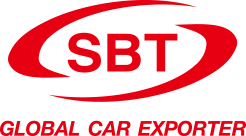- Nyumbani >
- Car Reviews >
- Toyota >
- Land >
- Checklist To Look At Before Buying Second Hand Cars In Uganda
Checklist To Look At Before Buying Second Hand Cars In Uganda |
-
PASSO 2007

Bei: USD 680
-
NOTE 2017

Bei: USD 4,850
-
PASSO 2020

Bei: USD 3,800
-
CRV 2011

Bei: USD 3,520
-
TEANA 2010

Bei: USD 3,380
-
TEANA 2009

Bei: USD 3,220
-
WISH 2009

Bei: USD 2,270
-
COROLLA 2020

Bei: USD 12,640
-
STREAM 2006

Bei: USD 3,440
-
PASSO 2016

Bei: USD 9,150
You are not the only one considering purchasing second hand cars in Uganda. Every year, roughly 40 million used automobiles are sold via a combination of private party and dealership transactions.
Car-buying might be a headache since there are so many options. This is why we have put up an easy-to-follow list to assist you in discovering and purchasing your ideal second hand cars for sale in Uganda.
1. The money you have to spend
According to the rule of thumb, second-hand car prices should not exceed 10% of take-home income if you are borrowing to buy one. A limited budget may necessitate cutting down even further. New tires, maintenance, and the like will be necessary for used automobiles from time to time. Other fees are sometimes overlooked when it comes to vehicle ownership, such as gasoline costs and insurance.
A "just-in-case" fund for unanticipated repairs is a smart idea if you intend to purchase a vehicle that is out of warranty.
2. Compile a list of potential secondhand automobiles
The Honda Civic and Toyota Corolla are well-known for their resale value. Because of this, they may cost a few thousand dollars more than a similar Kia Sportage or Ford Escape. You may save money by looking around and comparing many different brands.
3. Check the pricing
The shop you choose has a significant impact on the prices you see. Used automobiles may be found at the used car divisions of independent used car lots, new car dealerships, used car shops, and websites where private-party sellers post their vehicles for sale. Private-party automobiles are often the least expensive of the other option. There are a few reasons why CPO automobiles are often more expensive than their newer counterparts: Take a peek at the second-hand car prices on their inventory page to see what other buyers are paying for the models you have selected.
4. Evaluate the report of the vehicle history
Avoid purchasing a car from someone you do not know without getting a vehicle history report to verify the previous claims of the owners. This is a crucial phase in the process. The sooner you find out whether the automobile you are considering has a shady past, the better.
Vehicle history records may be obtained through verified websites. In addition to revealing whether or not the odometer has already been reset, these reports may also indicate whether or not the vehicle is registered as salvage, indicating that an insurance company has deemed it a complete loss. This information may be obtained by using the vehicle identification number (VIN) or, in certain situations, the license plate number. If the car is in stock at the dealership, it is common for them to provide these reports free of charge.
5. Reach out to the vendor
Do not rush out to view a potential automobile after finding the one you like. First, contact the vendor. This is a great method to get to know the seller and double-check the details of the used cars in Uganda and their prices.
Inquire of private-party sellers as to the reason for the sale and the cars technical condition. When purchasing from a dealership, the easiest approach to verify that the automobile is still available for purchase is to make a phone call.
The seller may bring up anything that was not included in the ad and cause you to reconsider purchasing the automobile. When it comes to buying a new automobile, it is best to wait until you have seen it in person before negotiating. Your offer might be tied to its condition after you see it.
Schedule a time to take a spin in the vehicle if all is going according to plan. It is best if it is done in the daytime so that you can observe the state of the vehicle.
6. Take the automobile for a spin
Car test drives are your finest source of information on what kind of vehicle you should buy. In addition, it is a useful tool for determining the general condition of a vehicle. As a result, you should block out all other thoughts and concentrate just on driving.
Check with the owner or dealer to determine whether service records are available after taking a test drive. If the planned maintenance has not been completed on time, you will see this information there as well.
7. Inspection of the vehicle
If you are interested in purchasing the automobile, you should first get it inspected by a professional. If you do not have access to a mechanic, you may browse reviews of nearby businesses on Google and Yelp.
Private-party sellers are likely to be more accommodating in this regard. Most auto dealerships will allow you to borrow a vehicle for an outside technician to evaluate. You will have to pay for the inspection. If it is a CPO vehicle, it is already been inspected and has a guarantee, so taking it to an independent technician is unnecessary.
8. Checking the paperwork
The contract may be signed at a dealership in the insurance and finance department. Many retailers provide extra services such as warranties, anti-theft devices, and pre-paid maintenance plans when you buy a product at the store.
Some individuals like the sense of security that an extended warranty provides, so you may want to consider it unless the vehicle is still covered by the guarantee of the manufacturer or is a Certified Pre-Owned vehicle. Make sure you completely review the dealer sales contract. If you live in a state that requires a smog certificate, you will see that it is included in the price of the car.
Check to see whether the seller has transferred the registration and title to you correctly before purchasing a vehicle from a private owner. Make sure you seal the transaction appropriately to prevent post-purchase headaches. Ask for the title and have the seller sign it over to you before you give over any money. Each state has its own set of regulations controlling the registration and licensing of vehicles. If at all feasible, you should verify with the local department of transportation to ensure that you would not be liable for any past-due registration costs if you were to purchase the vehicle. Do not go behind the wheel of your new automobile until you have purchased insurance for it.

